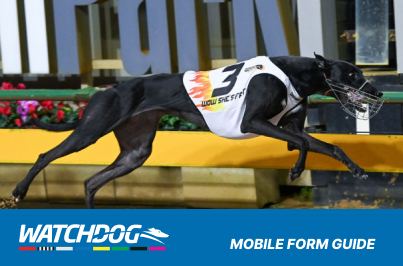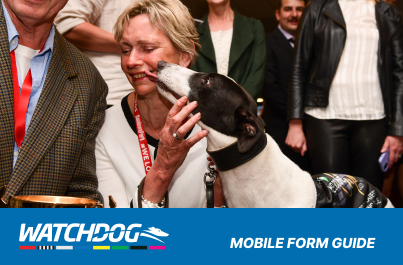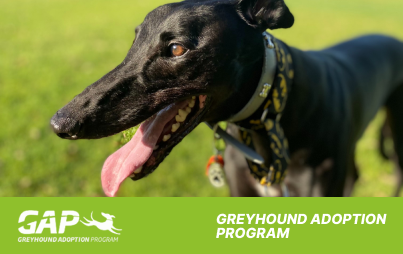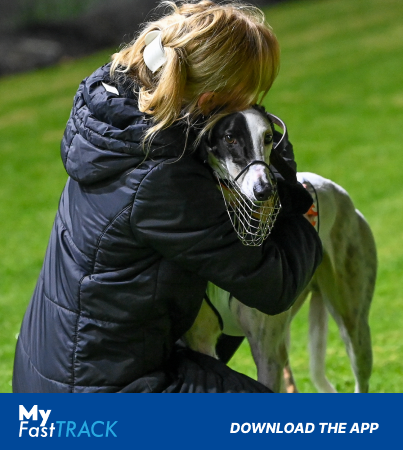
- Friday, 09 Jun, 2023,
- by mehul.webplanners
Animal Welfare Report – April 2023
Greyhound vaccinations
Once a greyhound receives its first two puppy vaccinations (at 6-8 weeks and 10-16 weeks of age), it requires (under the racing rules and Code of Practice) its first C5 vaccination booster around a year of age. This ’12-month’ vaccination allows the greyhound to be named for racing. After this, it is a requirement for all greyhounds to have a ‘current’ C5 vaccination through their life. A current C5 vaccination is generally deemed to be a minimum of:
1) A C3 vaccination (injection) every 3 years; plus
2) A Kennel Cough vaccination (covering both Bordetella and parainfluenza) every year (GRV recommends that this is an intra-nasal vaccination)
Important points:
• The requirements to get a greyhound into GAP are slightly more specific; the C3 must be given within 2½ years and the Kennel Cough (preferably intra-nasal but can be oral) must be given within 6 months of assessment.
• Some states are now or will be blocking nominations (WA already, SA 1 May) if they don’t have evidence of a ‘current C5 vaccination’. GRV strongly recommends that you email all vaccination certificates to GRV so they can be loaded onto the greyhounds’ Health tab in FastTrack which will be visible by the other states so you can race. While many participants record these in the ‘Greyhound Record’ part of FastTrack, this is only visible to the owner and/or person-in-charge.
Kennel Cough
Please advise GRV if you have Kennel Cough in your kennels and do not attend trial, race meetings or GAP assessments. In terms of GAP, we can work with you to reschedule your greyhound into another GAP pre-entry assessment as soon as it’s recovered.
Veterinary documentation
Just a reminder that if you need to get veterinary documentation to GRV, please ask your veterinarian for a copy of the document and send to GRV directly (as early as possible), rather than relying on the veterinary clinic. In most cases the clinic will email it to GRV but if they do not do so, the implications can be significant, even if it received but it is late. This applies mostly to desexing certificates, euthanasia certificates, death certificates or completed Stewards Orders for Follow-up Veterinary Consultation which are all time-sensitive.
Desexing mandatory prior to GAP pre-entry assessment
Just a reminder that it is now mandatory to desex your greyhound at least 10 days prior to its GAP pre-entry assessment. But it is important to get the desexing done as early as possible, as new assessment slots are allocated to desexed greyhounds on the waiting list first. This means the sooner you get it done the earlier date you will get allocated to. GRV strongly encourages you to use the GRV Desexing and Dental Scheme as this means the teeth are done at the same time. Information is available at https://greyhoundcare.grv.org.au/rehoming/desexing-and-dental-scheme/, including a convenient on-line application form.
Desexing is also mandatory under GAR 24 before you rehome your greyhound to another person (i.e., a member of the public or another participant), and the new owner cannot agree to get it done (as used to be the case under the greyhound Code of Practice).
Please advise GRV if a greyhound of yours has been desexed outside of the GRV scheme, or in the case of a male greyhound, if he has had one testicle removed previously. This is all recorded on FastTrack and will avoid greyhounds having unnecessary surgery looking for body parts that have previously been removed.
Surrendering greyhounds to pounds and shelters
It is a breach of the racing rules and the Code of Practice to surrender a greyhound to a “pound”, and the Care and Standards webpage at https://greyhoundcare.grv.org.au/retirement-from-racing/ has been updated to clarify what a pound is:
• Either a council-operated pound facility, regardless of what the facility is named and/or whether it is also a registered shelter. For example, Shepparton Animal Shelter, Epping Animal Welfare Facility and Bendigo Animal Relief Centre (BARC) are council-operated pounds. A registered greyhound cannot be surrendered to any council-operated pound facility under any circumstances.
• Or an organisation that provides contracted pound services to council(s). For example, RSPCA, Lost Dogs’ Home and Geelong Animal Welfare Society (GAWS) are registered animal shelters that also provide pound services for a number of different councils. A registered greyhound cannot be surrendered to any of these organisations if the owner, trainer or other registered participant responsible for the care of the greyhound reside in any of the local government areas for which the organisation is contracted to provide pound services for.
The webpage also lists the pound(s) for each of the 79 municipal areas, but if in doubt please contact GRV first.
Rehoming a greyhound to a member of the public
New owner details: As a licensed microchip registry for greyhounds, when you rehome a greyhound to another person, GRV requires the new owner’s name, full address (including postcode and municipality), phone number and preferably an email address. GRV also requires an alternate contact name and phone number, which is someone who can be contacted if the greyhound is found, and the new owner cannot be contacted.
Owner returns: Under the Code of Practice the racing owner must take the greyhound back if the new owner wishes to return it for any reason within 21 days of rehoming. While this can be frustrating, it means that if you rehome a greyhound to a member of the public, you will need to consider this 3-week period before you take in another greyhound in its place, as there is a possibility you may need to take the greyhound back.
National Adoption Month
Again, GRV is working with the other states in April to promote greyhound adoptions, which have become more challenging recently, which is part of the reason the waiting lists at GAP and all other rehoming groups are longer. Please use your personal and business contacts to promote the breed as a great pet, and if you don’t have any greyhounds available as pets, point them in the direction of GAP.
mehul.webplanners
Featured
Latest news
Watchdog


Green Light On | Episode 143 – The Meadows form plus Daniel Webber
James Van de Maat and Corey Smith preview Saturday night at The Meadows.






